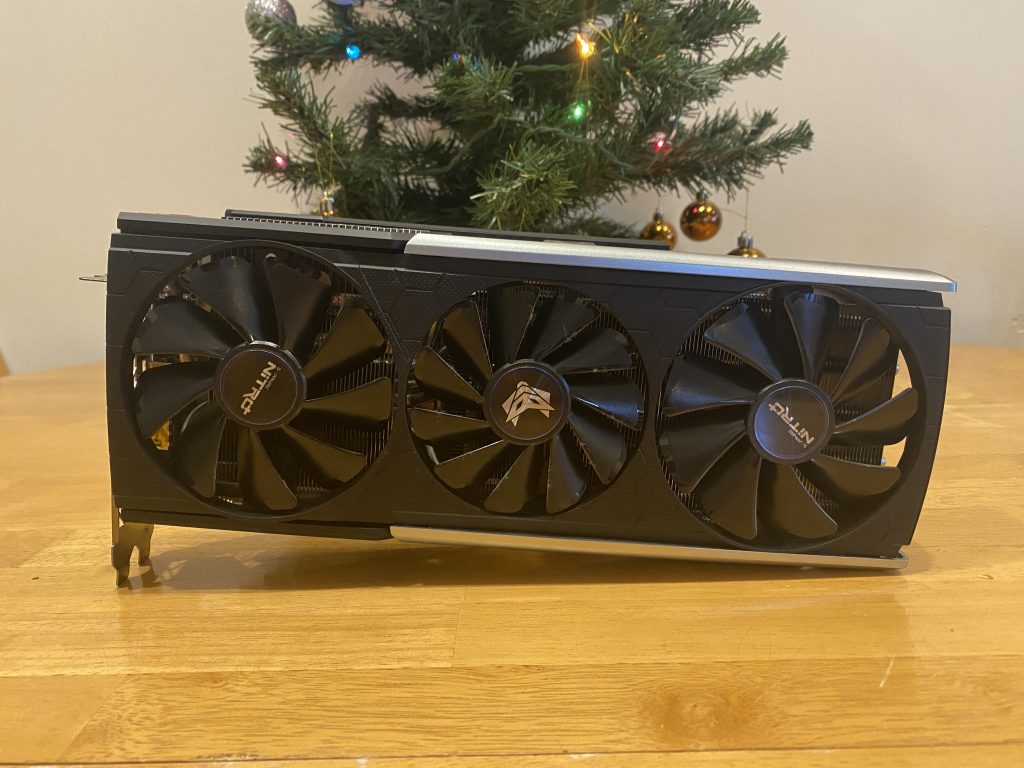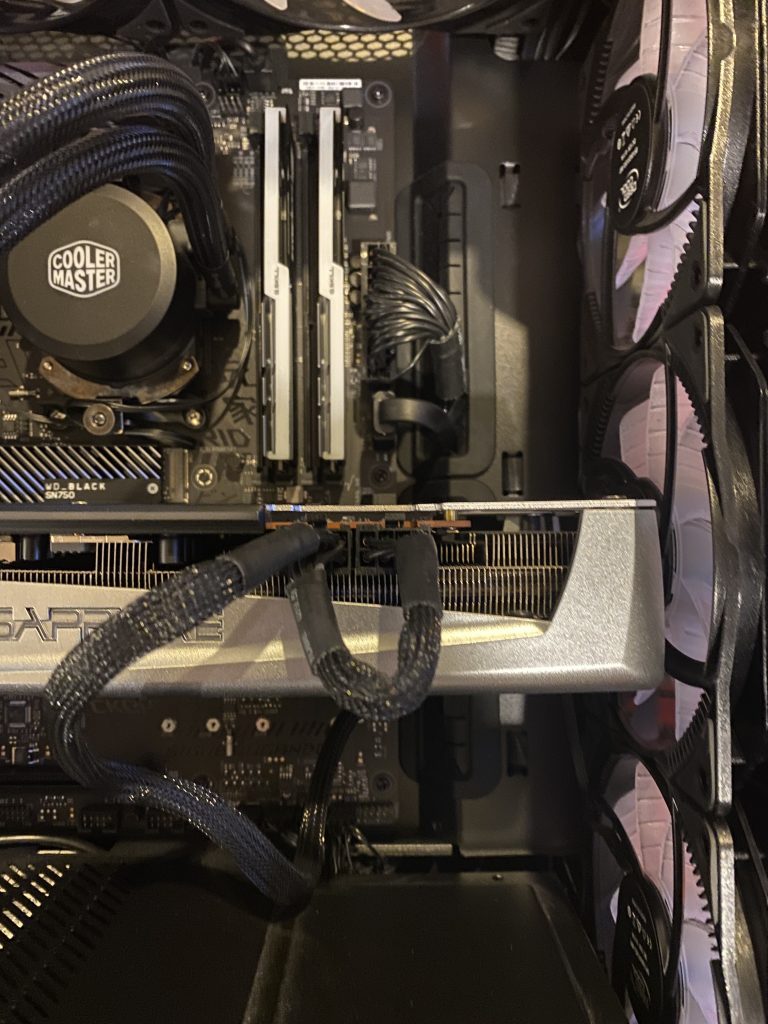5 Graphics Processing Unit
Choosing a GPU
Ryan Haffner
The most important aspects of choosing a GPU are VRAM amount, price and brand.

VRAM
VRAM or video random access memory is similar the the system RAM discussed in the desk analogy, but with one key difference; it is used only for rendering images. What this means is the amount of VRAM present in a system is directly tied to how much can be done with the GPU before a significant drop in performance. VRAM is measured in gigabytes, and can range from as low as 2GBs on lower end cards to as much as 64GBs or higher on purpose built cards. For most uses, between 6 and 12 gigabytes of VRAM is recommended. Any amount below this figure will mean a steep reduction in performance, while figures above 12GBs are usually reserved for special applications like high-fidelity gaming or content creation.
Price
Alas, perhaps the most important part of buying a GPU is one of the most painful; price. The reason most people build a custom PC is gaming performance, and the single most important factor in gaming performance is the GPU. A fast CPU won’t make a serious difference if paired with a weak GPU. When it comes to choosing a price for your shiny new GPU, I recommend spending as much as your budget allows. Prices range from under $100 to several thousand dollars for a purpose built card. For a mid-tier system, I recommend spending between $700 and $800 on the GPU. If we recall a mid-tier system one that costs between $1000 and $1500, this means half or more of your budget could be spent on the GPU!
Brand
In the GPU world, there are two options for brand, AMD and Nvidia. Generally, the PC world agrees Nvidia makes the best GPUs. However, these do come at a premium! AMD’s GPU lineup is generally less powerful, but more affordable (and compatibly) across the board. As in CPUs, brand doesn’t really matter, what matters much more is the VRAM amount and getting the most performance per dollar. A common misconception is that pairing an AMD CPU to an AMD GPU will boost performance. This is not the case, and using an AMD CPU with an Nvidia graphics card is completely fine (Walton, 2021). However, Nvidia graphics cards are generally less compatible with any operating system that isn’t Microsoft Windows.

Other Considerations
Two other considerations when buying a GPU are the physical size of the card and general compatibility. The first is simple, get a GPU that will fit in your machine! There’s no tricks or metrics here, sometimes GPUs are big and cases are small. The most important measure is length, and it corresponds to the how long the graphics card is horizontally. Luckily, because this is a common issue, most GPU and case manufactures include this measure on spec sheets. Another consideration is compatibility. Nvidia GPUs are notoriously difficult to get working with any system that isn’t running Windows. This means attempting to run Apple macOS or any Linux distribution will be more difficult, and if that’s your intention just save yourself the headache and buy an AMD GPU.
Budget Allocation
As stated above, for most custom built PCs the GPU should be the most expensive part, sometimes costing as much as the rest of the system combined! A common trap for beginners to fall victem to is to buy a cheaper GPU when first building the system, only to find performance disappointing. While it’s painful to spend less on “fun” components like lighting and a fun case, if the purpose of the machine is gaming then the GPU should be priority number one.
Video Random Access Memory. This is memory (like system ram) stored directly on the graphics card used for only video rendering. Measured in gigabytes.
